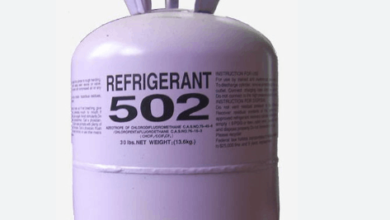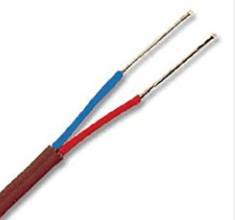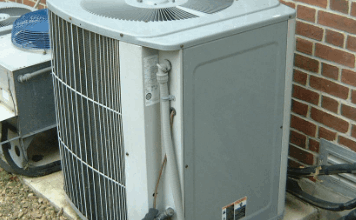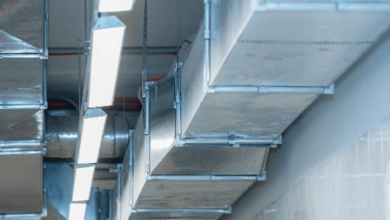Reversing Valve – How Does It Work? Problems and Solutions
In different kinds of HVAC applications, the use of valves is generally very common. Also, the use of reversing valve applications is very common. Here you can find detailed information about reversing valve applications in general. Problems and troubleshoots and other kinds of informative things.
What is Reversing Valve?
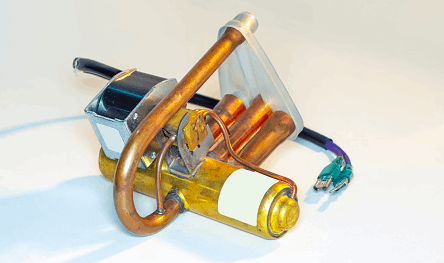
As you understand from its name, reversing valve is a valve application that directs the coolant flow inside the heat pump applications in different or reverse ways. The primary purpose of this directing motion is to change the way of working of the heat pump from cooling to heating. So, with the reversing valve control, you can turn the heat pump application from the cooling mode to heating in winter. And also you can do this for summer.
Because of this, they are very important applications. Without them, you can not operate the heat pump application in the intended way.
How Does It Work?
Also, the working principle of the reversing valve applications is very simple. You know that there is a constant coolant flow inside the HVAC systems such as heat pumps and refrigerators. Once the coolant comes from the compressor at high pressure, the inlet of the reversing valve receives the coolant.
So, there are other outlets for this valve. If the coolant is directed to the discharge line, the heat pump application will work as a heater. But once the reversing valve is activated, the coolant is directed to the other lines to operate as a cooler system. We do not delve into how the system becomes cooler or the heater with different ways of coolant.
As you understand that the reversing valve controls the way of coolant.
There is an electromechanical which we call solenoid control that controls the position of the butterfly plate that controls the fluid flow. The electrical inputs come from the relays and control unit, which controls the fluid flow system.
As you understand that it has a very basic principle.
What are the Symptoms of a Bad Reversing Valve?
Understanding the general symptoms are very easy after learning about how it works. There will be different symptoms that you can experience in general.
- Heating or cooling problems: If there is a problem with the valve, it can not control and direct the coolant to the intended areas. So, you will not cultivate the intended cooling or heating performance from the system.
- Noisy operation: Once the fluid flows through this bad valve application, it will create a rattling and clicking sound coming from the valve.
- Cycling problems: The heat pump applications are generally working in cycles. If the cycling is much more frequent, it makes the electrical motor that operates the compressor will work more. So, you may have a problem with the valve.
- Reduced airflow: The airflow of the system can reduce which can be the cause of the bad reversing valve.
- Leaks: Refrigerant leaks may take place because of the bad valve.
Causes of These Problems
So there can be different causes of these problems in general.
- Problems with coil connections: If there are defects in the coiling system of the reversing valve, the proper way of flowing will not take place as intended. So, it is very important to deal with the problem. Replacement of coils can solve the problem.
- Leaks: If the valve application has been damaged, you can see coolant leaks. If the sections that are damaged are repairable, repairing these sections can solve the problem. Otherwise, valve replacement can be required.
- Problem with butterfly plate: The plate that controls the fluid flow may wear or tear over time. And it will lose its usability. And this can cause the general problems that we explain above. The butterfly plate can be replaced. But most of the systems do not provide it. And you need to replace the valve completely.
- Problems with solenoids: The electromechanical system that controls the coolant flow can be damaged or impaired. In this case, we need to replace the valve system.
Reversing Valve Replacement
We need to state that if you are not an experienced HVAC technician, do not attempt to do it. Because you need to deal with the coolant which is generally dealt with according to the standards. And also, the technicians use special toolings and equipment to deal with the problem. But we can give some tips about reversing valve replacement.
- First of all, you need to turn off the power and unplug the electricity.
- You will need a tool to recover the refrigerant. While recovering it, you need to take care not to leak it into the atmosphere.
- After that, you can remove the reversing valve. The place of reversing valve is generally near the compressor. Detach the electrical connections and tube connections.
- After that, you can install the new valve application. And you need to vacuum the system to remove the moisture and air. To do it, you will need special equipment again.
- Inject the refrigerant and see if the system working properly.
What is the Price of Replacement?
The prices may vary according to the model and brand of the heat pump application that you are using. But if we need to give a specific range of price, you will probably pay around $500-$1500. The prices of the replacements are generally high like this. Because it requires special expertise and tooling. And the person who will replace the valve must be experienced in that area.
Conclusion
As you understand that the working principle of these valves is very simple. And also the duty is very straightforward. We explained the general things that you need to know about the reversing valve applications that the heat pump system that you have.
If you have additional comments or questions about the reversing valve systems, please leave them below.
Check the other related topics about valves and HVAC;
Air Compressor Check Valve – Guide with All Info You Need
Capped Valve- A Useful Solution to Fluid Flow Systems
Car Seal Guide – How to Use? What Does it Mean?
Heater Control Valve – What is It? How it Works?
Idle Control Valve – Everything You Need to Know!
Exhaust Valve – Problems, Types and Solutions
SharkBite Shut Off Valve – Detailed and Unbiased Review
Pressure Washer Unloader Valve – All the Points You Need to Know
